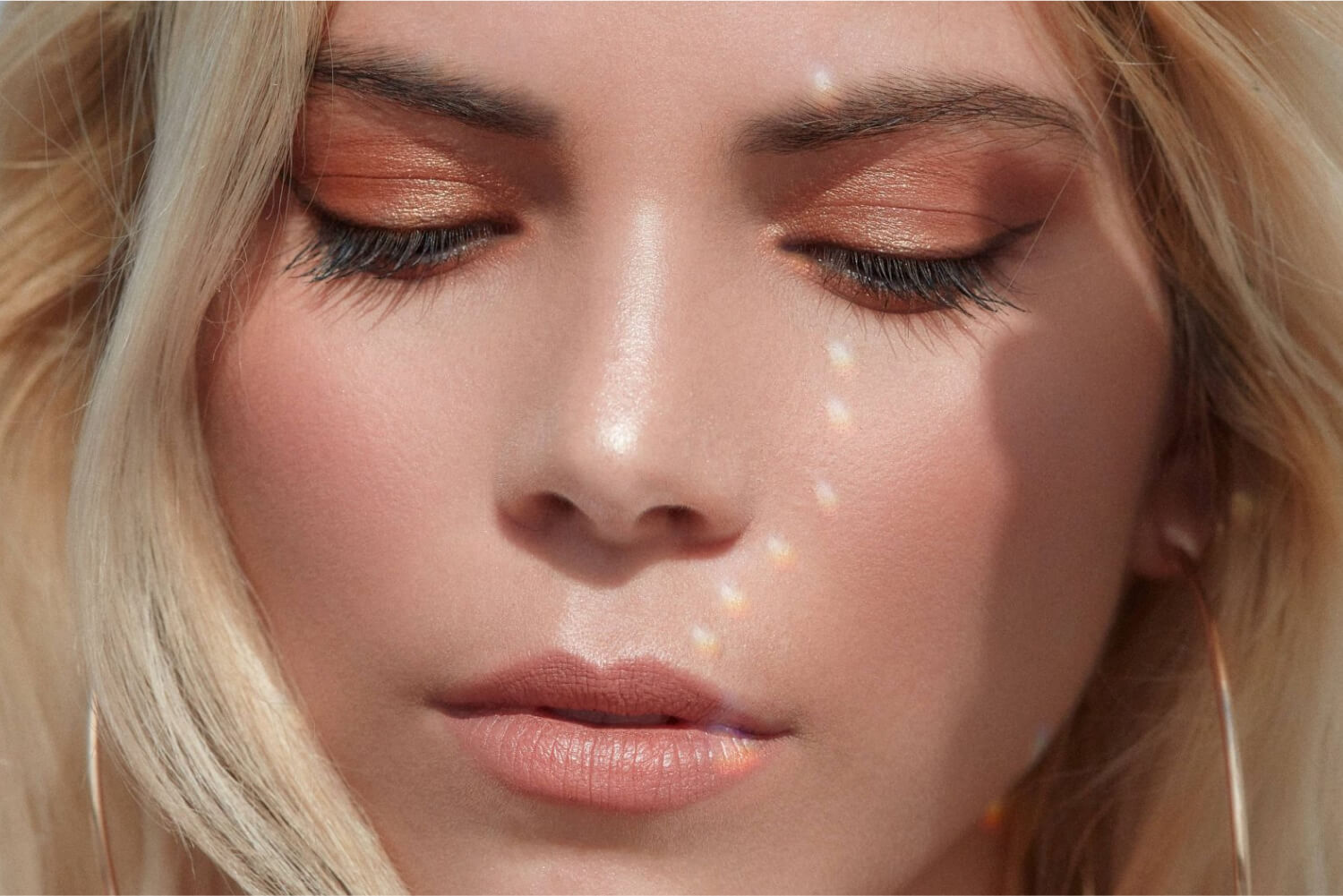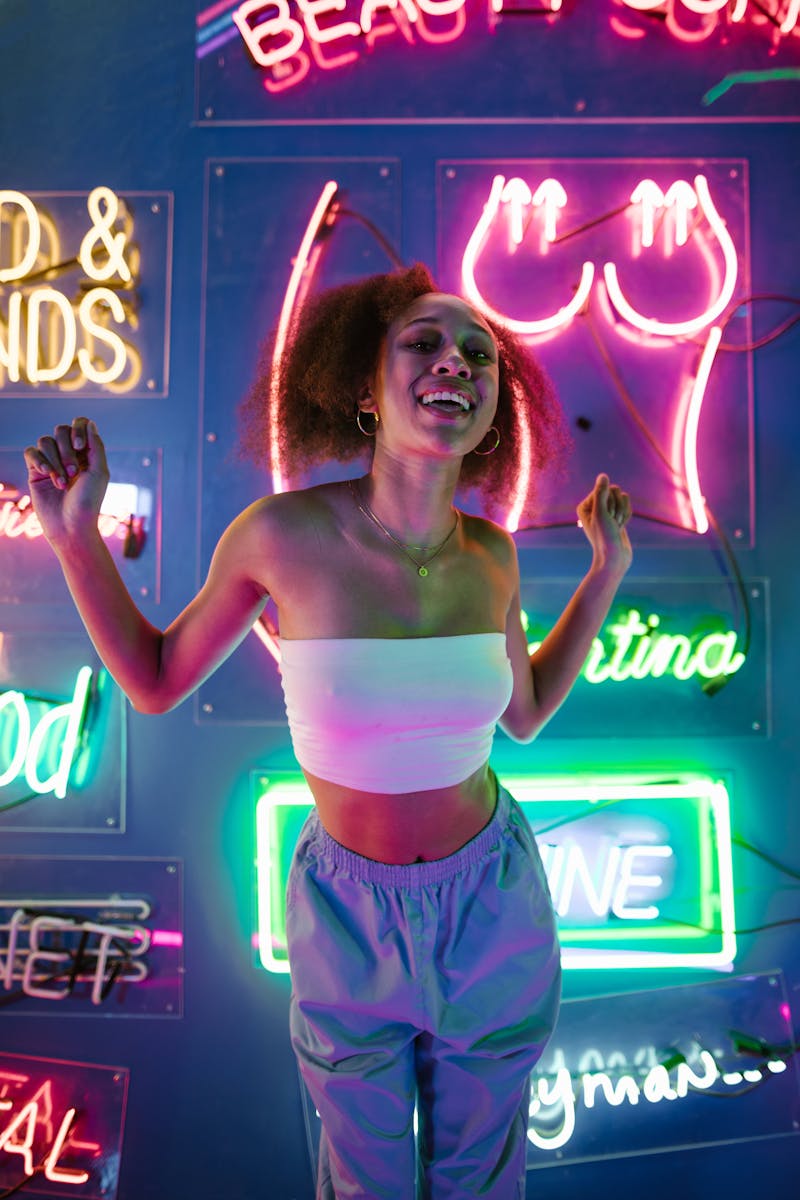
For years, the beauty industry has been a dynamic canvas, constantly evolving and redefining what it means to feel beautiful. We’ve seen trends come and go, from the ultra-glamorous full-coverage beats of the mid-2010s to the more subtle, yet often intricate, routines dubbed “no-makeup makeup.” But what happens when the illusion of effortlessness gives way to genuine, unadulterated authenticity? The beauty landscape is currently witnessing a profound shift, one that champions real skin, real texture, and real luminosity, moving beyond mere camouflage to celebrate our inherent radiance.
This isn’t just another passing trend; it’s a movement rooted in empowerment, inclusivity, and a deep appreciation for the skin we’re in. It signals a collective exhale, a moment where women are increasingly comfortable shedding layers, both literally and figuratively, to reveal their true selves. The conversation has shifted from meticulously crafted facades to nurturing skin from the inside out, embracing every pore, line, and freckle as part of our unique story. It’s about feeling confident, seen, and truly beautiful, exactly as we are, and it’s a vibe we can absolutely get behind.
So, let’s embark on a journey through the fascinating evolution of this natural beauty movement. We’ll explore how we arrived at this pivotal moment, from the foundational figures who first dared to challenge conventional makeup norms to the innovative concepts like “glass skin” that are now dominating runways and social feeds. This is more than just cosmetics; it’s a statement about self-acceptance, a celebration of individuality, and a testament to the power of embracing your authentic glow.
:max_bytes(150000):strip_icc()/nomakeup_recirc-5fb9cede639c4b24b727c3908dd0241c.jpg)
1. **The Shift from “No-Makeup Makeup” to “No Makeup”**For a while, the concept of “no-makeup makeup” reigned supreme. Brands like NARS, Laura Mercier, and bareMinerals led the charge, promising light, barely-there products designed to enhance rather than conceal. This approach was a stark contrast to the heavy, full-coverage looks popular around 2016, with their warm smokey eyes and matte finishes. It seemed like a step towards naturalness, a welcome reprieve from the more dramatic aesthetics that had dominated.
However, in hindsight, the “no-makeup makeup” trend often felt like a bit of a deception. Viral showcases frequently involved elaborate 10-, 12-, or even 15-step routines, requiring specific techniques, a cabinet full of pricey products, and an array of specialized tools. All of this effort, time, and investment was dedicated to achieving a look that was, ironically, meant to appear as if you weren’t wearing anything at all. It left many wondering, what truly was the point if the journey to naturalness was so complicated?
Fast forward to 2024, and we are witnessing a genuine revolution. This new season of “no-makeup makeup” is transcending its predecessor by simply advocating for *no makeup* at all. It’s about ditching mascara, skin tints, blushes, and similar products entirely, choosing instead to let natural skin be the star. This emerging trend gained significant traction over the summer, with viral discussions on TikTok and Instagram encouraging people to go mascara-free.
Believers in this movement often claimed that their eyes looked wider, brighter, and more awake without the potential for clumpy mascara to weigh them down or smear throughout the day. While the debate over mascara’s actual impact on eye appearance continues, the intention behind this choice is clear: to strip back and prioritize the inherent beauty of one’s features. This commitment to genuine bare-facedness was unmistakably on display at recent fashion events, signaling a major shift in beauty ideals.
More recently, at NYFW, I personally witnessed models confidently walking down the runway bare-faced for the Prabal Gurung spring/summer 2025 show. Their skin was not artfully disguised with “no-makeup makeup” products; instead, they exclusively showcased Peach & Lily’s innovative glass-skin collection. This was a powerful statement: it wasn’t about faking a natural look; it was literally just no makeup at all, allowing their skin’s true texture and radiance to shine through.

2. **The Genesis of Natural Beauty: Clinique’s Trailblazing Approach**The roots of what we now understand as natural-looking makeup, and indeed the entire movement towards skin-centric beauty, can be traced back to brands that dared to innovate decades ago. One such pioneer was Clinique, a brand that, in the 1970s, began to offer foundations specifically designed to more closely match people’s actual skin tones. This might seem like a given today, but at the time, it was a groundbreaking concept.
In an era dominated by vibrant, often less natural aesthetics – think blue and purple eyeshadows, or bold red, fuchsia, and frosty pink lipsticks – the idea of natural-looking makeup was barely on anyone’s radar. The prevailing customer needs for complexion makeup were far more rudimentary; people simply wanted to find a product that matched the color of their neck, often settling for shades that were far from a perfect match for their face.
Clinique, launched in 1968, was revolutionary for merging the distinct worlds of makeup and skincare. Before Clinique, these two categories were largely separate, each with its own perceived purpose. Clinique’s philosophy, however, posited that cosmetics could be more than just decorative; they could be an extension of a healthy skincare routine.
Jane Hertzmark Hudis, executive vice president and chief brand officer of the Estée Lauder Companies, highlighted this pioneering approach, stating, “The makeup was formulated in the same way and not only could do no harm but could also enhance your skin.” This dual-purpose formulation was designed to work synergistically, offering both aesthetic improvement and skin benefits. At its inception, Clinique stood alongside Estée Lauder and Aramis (a fragrance brand) as one of the company’s only three brands, underscoring its unique position and innovative vision in the market.

3. **Bobbi Brown’s Vision: The Original Architect of Natural Radiance**While Clinique laid crucial groundwork, another visionary, makeup artist Bobbi Brown, further propelled the natural beauty movement forward. Her philosophy, which began to take shape in the late 1980s, centered on enhancing a woman’s inherent beauty rather than transforming it. Brown articulates her approach simply: “I started looking at a natural, beautiful face in the best lighting and trying to figure out how I could use makeup to make people look like that.”
This ethos drove her to create products that felt authentic and understated. In 1990, Brown began selling lipsticks directly from her home, designed to complement natural lip tones. These weren’t bold, statement-making shades; instead, they “looked like my lips, but a little more intense,” offering a subtle yet impactful enhancement. Her focus was always on a flattering, real-life aesthetic, emphasizing what was already there.
Frustrated with the limited and often unsuitable foundation options available in the 1980s, Brown, then an editorial makeup artist, resorted to mixing yellow, orange, and red theatrical makeup to correct existing foundations for more accurate shade matching. This hands-on experience underscored a significant gap in the market: the lack of inclusive and natural-looking complexion products. She recognized the need for foundations that truly blended seamlessly with a diverse range of skin tones.
Driven by this realization, Brown introduced Bobbi Brown Cosmetics foundation sticks in 1992. This collection featured 10 shades, ranging from the fairest to the deepest, specifically formulated to more closely match one’s skin tone. Her innovative approach resonated deeply, proving she was onto something significant. Her brand’s success was undeniable, leading the Estée Lauder Companies to acquire Bobbi Brown Cosmetics in 1995 for a reported $74.5 million, cementing her legacy as a true pioneer in natural, inclusive beauty.

4. **Laura Mercier and the Dawn of Tinted Moisturizer**Building on the growing momentum for natural beauty, French makeup artist Laura Mercier introduced another cornerstone product that would profoundly shape the “no-makeup makeup” movement: the tinted moisturizer. Her namesake brand launched in 1996, and just a year later, her tinted moisturizer made its debut, quickly becoming an indispensable item for countless individuals.
Mercier’s tinted moisturizer was a game-changer because it made makeup more approachable, particularly for those who were hesitant about traditional foundations. Many people found full-coverage foundations heavy, mask-like, or simply too much for their everyday needs. Tinted moisturizer offered a lighter, sheerer alternative that provided just enough coverage to even out skin tone while still allowing the skin’s natural texture to show through.
This product perfectly encapsulated the “less-is-more” philosophy, bridging the gap between skincare and makeup. It offered a subtle enhancement, a hint of color, and often hydration benefits, all in one easy-to-apply formula. For those seeking a fresh, natural look without the commitment of a heavier foundation, it was the ideal solution. It fostered a sense of effortless beauty, aligning perfectly with the burgeoning desire for an understated aesthetic.
The widespread adoption of Laura Mercier’s tinted moisturizer solidified its place as a cornerstone of the burgeoning “no-makeup makeup” movement. Its popularity wasn’t fleeting; to this day, Laura Mercier’s tinted moisturizer remains the second-best-selling prestige tinted moisturizer in the market. This enduring success is a testament to its innovative concept and its ability to meet a fundamental consumer need for products that enhance natural beauty with grace and simplicity.

5. **Glossier’s Revolution: Defining the “Dewy” Aesthetic**The evolution of the natural beauty movement took a decidedly modern turn with the arrival of Glossier. In the fall of 2014, in a makeshift office in Manhattan, founder Emily Weiss rallied her nascent team around images of glowy, fresh-faced, smiling models, asking them to dot the ones they liked best. What was striking was Weiss’s observation: “You don’t see any makeup in those pictures. You see these amazing women who are themselves and very present.”
Glossier, initially a mysterious Instagram account, quickly captivated an audience with its behind-the-scenes glimpses, charming stickers, and the now-iconic millennial pink hue. No one quite knew what Weiss, already a beauty world fixture through her blog Into the Gloss, was building, but the intrigue was undeniable. The brand’s inaugural campaign epitomized an effortlessly beautiful, seemingly makeup-free, and crucially, “dewy” look.
“Dewy”—now an omnipresent descriptor—was popularized by Glossier and quickly became synonymous with radiant, luminous, hydrated, and moist, but never oily, skin. This aesthetic became a defining characteristic of the brand. Of course, the models in the campaign *were* wearing makeup, including Glossier’s new pigmented skin tint. The magic, however, lay in its imperceptibility; it was designed to even out tone while still looking undeniably like skin, blurring the lines between what was bare and what was subtly enhanced.
These images and the philosophy behind them were pivotal, launching a brand that irrevocably changed the trajectory of the modern beauty industry. Glossier didn’t just sell products; it created an entire aesthetic that would become one of the most widely copied, not only within beauty but across direct-to-consumer marketing strategies. Their approach redefined how young people interacted with beauty and fundamentally reshaped the concept of “no-makeup makeup,” making subtle enhancement both aspirational and accessible.

6. **The “Glass Skin” Phenomenon: A Deeper Dive with Peach & Lily**If “dewy” was the buzzword of one era, “glass skin” is undoubtedly defining the current natural beauty landscape. This trend, first coined by Alicia Yoon, aesthetician and founder of Peach & Lily, refers to skin that is so exceptionally healthy, it possesses an almost translucent luminosity and an unparalleled smoothness. It’s a look that suggests skin is utterly pristine, clear, and radiant, much like a pane of glass.
What sets glass skin apart, and what makes Peach & Lily’s approach so resonant, is its emphasis on internal health rather than external disguise. Yoon explains, “Glass skin is your healthiest skin yet—skin so healthy, there’s a luminosity and smoothness that shines through.” This philosophy moves away from the idea of making your skin *look* filtered or camouflaged with makeup. Instead, it’s about genuine skin health that radiates from within, a true testament to diligent care and nourishment.
Yoon further clarifies that achieving glass skin isn’t about striving for an unattainable, Instagram-filtered perfection, but rather about “supporting your skin from the inside out.” Crucially, she emphasizes that this goal is truly “for everyone, no matter your skin type, skin tone, or skin concern.” This inclusive message is central to the glass skin ethos, making it feel attainable and relevant to a broader audience who may have previously felt excluded by hyper-perfected beauty standards.
Her personal experience underscores this inclusivity: “I have eczema, dry, sensitive skin, and I’m in my 40s,” Yoon shares. Despite these challenges, she firmly believes, “My glass skin will look different from someone who does not have eczema and is in their 20s, but I can still achieve my glass skin goals, because it’s about my skin being at its healthiest.” This perspective empowers individuals to pursue their healthiest skin, celebrating the unique beauty that emerges when skin is truly cared for, rather than chasing a universal ideal.




